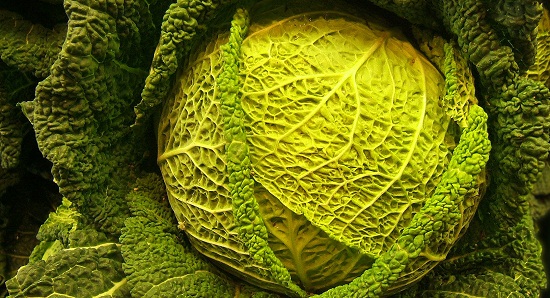Vitamins and minerals are important. Really important. There are the antioxidant vitamins (A, C, E et al), which help counteract damaging free radicals in our bodies (the ones we naturally produce as well as the ones we unnaturally consume from certain less-than-healthy foods). There are the B-vitamins, which play crucial roles in the teeny tiny chemical reactions that make our cells—and us—work right. A lot of minerals (magnesium, zinc, copper, et al) play similar roles in our cells.
So that’s the thumbnail sketch. But there’s more to healthy food—and healthy bodies—than vitamins and minerals. There’s a whole slew of other compounds called phytochemicals. Phytochemical compounds are molecules that allow plants to defend themselves against disease and damage from insects and other predators. These are pretty important to plants since, you know, they can’t exactly pick up their roots and flee their attackers. (There’s some evidence that plants that have to fend for themselves without the artificial protection of pesticides develop more phytochemicals because it’s vital to their survival.) Turns out, these compounds are good for our bodies, too!
Here are the major “classes” of phytochemicals:
- Polyphenols. These include the flavonoids (found in highly pigmented fruits and veggies as well as in soy, cocoa, red wine and green and black teas), the phenolic acids (coffee, berries, spices) and the non-flavonoids (antioxidant vitamins and minerals like A, C and selenium).
- Terpenes. These include the carotenoids (orange and red pepper, carrots, pumpkin, sweet potatoes, dark green leafy veggies, tomatoes) and the monoterpenes (citrus, herbs, chickpeas, ginger).
- Sulfur compounds. These include the diallyl sulfides (garlic and onions) and the isothiocyanates (cruciferous veggies).
- Saponins. These include triterpenoids (quinoa, apples, garlic, berries, beans and peas) and steroids (oats, eggplant, garlic). Saponins have been found in wine and grapes, too.
This is not an exhaustive list, by any means. Previously unidentified phytochemicals are being discovered all the time, and the list of plant foods that contain already-known phytochemicals keeps growing. Cancer prevention grabs a lot of the attention when it comes to phytochemicals, since many of these compounds appear to inhibit cancer cell and tumor development, growth and/or proliferation. They also appear to play a role in cardiovascular health. This is really a newish area of nutrition science research, so I expect that the good news about these compounds will keep coming.
The common link here is that all of these compounds come from plants. Plants. This is one of the many reasons why it is so important to eat lots of veggies and fruit. And herbs and spices…an often-overlooked ingredient for health. This is a perfect example of why it’s important to get nutrients from food. Even though I listed a relative few food examples for each of the phytochemical categories, there are lots of plant foods that contain compounds from many phytochemical categories. You can’t isolate all of those compounds into a pill! That’s all the more true because we may have discovered only a fraction of them (one of my professors mentioned the other day that there are at least 600 known carotenoids…so far).
You may wonder if there’s a recommended daily allowance (RDA) for various phytochemicals. Well, there’s not. While they may be biologically significant, they aren’t considered to be essential nutrients. Again, this is a new area of nutrition research. There may come a day when we know enough to say, “Yes, these are essential, and this is how much you need.”
Until then let’s keep it simple: Veggies, fruits and plants rule!








